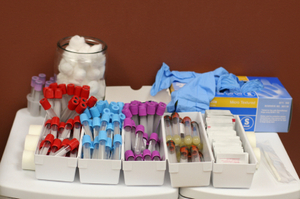With proper care, sterling silver jewelry will last for generations. Strong and beautiful, affordable, hypoallergenic, and fashionable, it can be polished to a lustrous sheen no other metal can match. With minimal care, it can be worn often.
Sterling silver is an alloy of 92.5% silver and 7.5% other metals, usually copper. Fine silver (99.9%) is too soft to resist much wear, so manufacturers add other metals to increase its strength and durability. Silver does not react with oxygen or water at normal temperatures, but the added metal may react with oxygen and other substances, tarnishing the finish, first creating a yellow tinge, and over time, a black residue on the surface of the silver. The higher silver content the piece has, the less chance that it will tarnish. Many manufacturers will plate their silver jewelry with rhodium, which is a member of the platinum family. Rhodium plating produces a shiny, long-lasting finish which resists tarnishing, scratching, and corrosion.
The best way to keep your silver jewelry lustrous is to simply wash it in a phosphate-free detergent and warm water after each wearing, and dry the piece thoroughly with a soft cloth (never paper). Eyeglass cloths are excellent for this purpose. Your jewelry may be stored in an airtight zip-lock polyethylene bag or an anti-tarnish cloth or bag; jewelry chests with anti-tarnish linings are also available. Never store your sterling silver jewelry in newspaper, plastic cling wrap, or cardboard boxes that are not archival, as this will cause the finish to tarnish rapidly.
Remove your jewelry before using any product that contains bleach, ammonia, acetone (in many nail polish removers), or turpentine, and before swimming in chlorinated water. These chemicals will break down the alloys in the metal and may leave the surface with pits or a dull finish. Avoid direct contact with perfumes and lotions as they may also affect the finish.
To remove mild tarnish from your jewelry, use a silver-polishing cloth. If your silver has developed a patina, there are commercially available silver polishing pastes. Always follow the manufacturers instructions carefully. Use the smallest amount of paste necessary and wipe in a back-and-forth (not circular) motion, using a soft cotton cloth to avoid scratches. Some choose to leave some tarnish in crevices to enhance the look of the piece, or you may use a soft, clean toothbrush to remove it. Liquid dips should be used sparingly since they can be toxic and may contain ammonia which can damage the finish with repeated use. Reserve dips for badly tarnished pieces. Extreme tarnish and corrosion may be removed by your jeweler using a polishing wheel. Antique silver can be damaged and devalued by harsh polishing techniques and cleaning them may be best left to your jeweler or a silver company. Most jewelers do not recommend using toothpaste to clean silver, as it may contain chemicals and abrasives which may eventually damage the finish.
An ultrasonic cleaner may also be used for jewelry without gemstones. Never use an ultrasonic cleaner, ammonia, or chemical solutions to clean jewelry that contains opaque gemstones such as opal, turquoise, malachite, and lapis lazuli. These gems have a porous surface which may absorb the chemicals and cause the stone to discolor or crack. Avoid using abrasive cleaners on gemstones; they are best cleaned by gently wiping with a soft, damp cloth.
With proper care, your sterling silver jewelry will remain beautiful and wearable; it may even become an heirloom!


